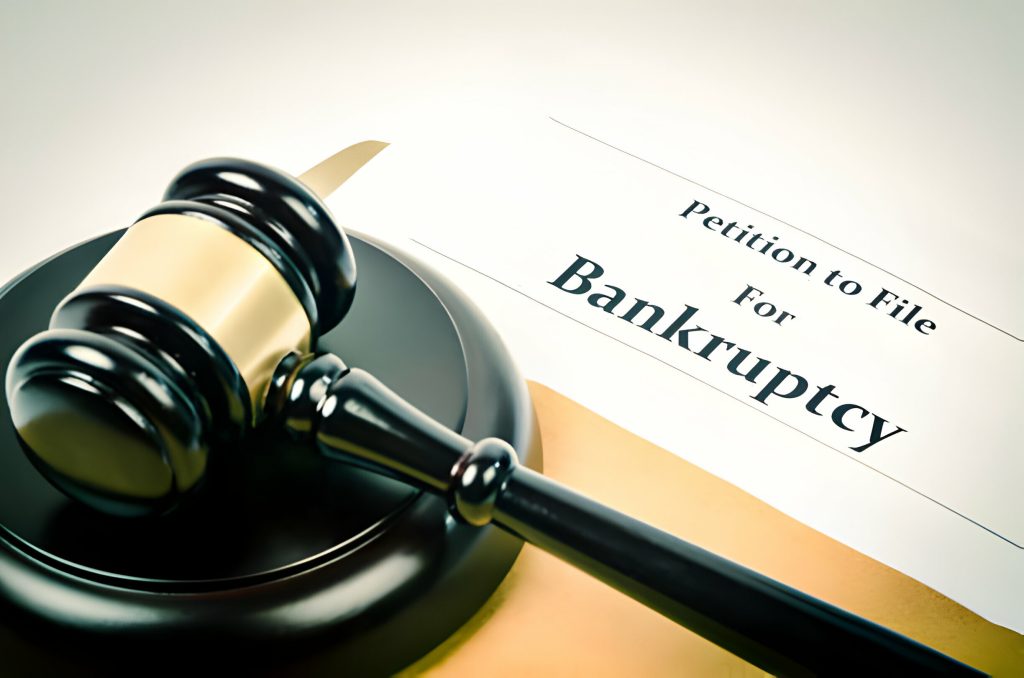You might think that only a company’s financial mismanagement could lead to bankruptcy, but did you know that there are external entities with the authority to force a company into insolvency? Understanding the range of forces that can potentially trigger a company’s bankruptcy is crucial for business owners and stakeholders. By exploring the different entities that hold this power, you will gain a deeper insight into the intricate web of factors that can influence a company’s financial stability. Stay tuned to uncover the surprising ways in which external pressures can impact a company’s financial health and viability.
Involuntary Bankruptcy Process Requirements
Filing for involuntary bankruptcy against a company involves meeting specific requirements outlined in the Bankruptcy Code under section 303. Creditor strategies play a pivotal role in this process, as they must ensure the debt thresholds are met before initiating court proceedings. Creditors must have a certain amount of undisputed and unsecured debt to petition for involuntary bankruptcy. Debtor objections can arise if the debtor contests the claims made by the creditors. However, court decisions ultimately determine the validity of the creditor’s petition and whether the company will be forced into bankruptcy. Asset protection becomes a critical consideration for both creditors and debtors during this process. Creditors aim to secure assets to cover debts, while debtors seek to safeguard their assets from potential liquidation. Successfully navigating these requirements is essential for creditors looking to compel a company into bankruptcy.
Reasons for Rare Involuntary Bankruptcy
Transitioning from the requirements of filing for involuntary bankruptcy, understanding the reasons behind the rarity of such occurrences sheds light on the complex dynamics between creditors and debtors in financial distress. Creditors’ perspectives play a crucial role in the infrequency of involuntary bankruptcies. Industry trends indicate that companies often choose voluntary bankruptcy over being forced into it, impacting the rarity of the process. Economic factors such as the costliness of involuntary bankruptcy proceedings contribute to its uncommon nature. Legal implications, including the risk of trial cases and potential court rulings requiring creditors to cover debtors’ legal fees, further dissuade creditors from pursuing involuntary bankruptcy. Risk assessment by creditors also plays a significant role, with the uncertainty and potential drawbacks associated with the process leading to a reluctance to initiate involuntary bankruptcy proceedings. These factors collectively contribute to the rarity of involuntary bankruptcies and highlight the intricate considerations involved in such financial decisions.
Impact of Involuntary Bankruptcy on Businesses
The impact of involuntary bankruptcy on businesses can be substantial, affecting their financial stability and operations significantly. When a company is forced into bankruptcy, it can lead to court supervision, impacting various aspects of the business. Creditors’ rights play a crucial role in these proceedings, determining the course of action taken against the company. Businesses facing involuntary bankruptcy often have to navigate between Chapter 11 and Chapter 7 bankruptcy options based on their financial situation. The response from debtors in these situations can vary, influencing the overall outcome of the bankruptcy process.
| Business Operations | Financial Stability | Court Supervision |
|---|---|---|
| Disrupted schedules and processes | Threat to revenue streams | Increased oversight and reporting requirements |
| Employee morale and productivity issues | Potential loss of assets | Limited autonomy in decision-making |
| Supply chain disruptions | Difficulty in obtaining credit | Legal restrictions on business activities |
| Customer trust and relationships at risk | Uncertainty in financial planning | Compliance with court orders and directives |
| Marketing and sales challenges | Impact on shareholder value | Increased legal costs and administrative burden |
Legal Considerations in Involuntary Bankruptcy
After examining the impact of involuntary bankruptcy on businesses, understanding the legal considerations in such situations is critical for navigating the complex proceedings effectively.
- Creditor Requirements: Creditors initiating involuntary bankruptcy must meet specific criteria outlined in the Bankruptcy Code, including a minimum number of unsecured creditors and debt value thresholds.
- Debtor Objections: Debtors have the opportunity to object to the initiation of involuntary bankruptcy within a specified timeframe, typically 21 days, before court proceedings proceed.
- Petition Criteria: The petition for involuntary bankruptcy must meet stringent requirements, such as the debt being undisputed, unsecured, and exceeding the specified value thresholds.
- Asset Safeguarding: Understanding how to safeguard assets from creditors during involuntary bankruptcy proceedings is crucial to protect valuable resources and navigate the legal complexities efficiently.
Navigating the legal landscape of involuntary bankruptcy requires a thorough understanding of creditor requirements, debtor objection rights, petition criteria, and asset safeguarding strategies. By grasping these key legal considerations, you can effectively manage your assets, respond to creditor actions, and safeguard your financial interests during the bankruptcy process.
Seeking Legal Assistance in Bankruptcy
When faced with complex bankruptcy proceedings, seeking legal assistance is crucial for navigating the intricate legal landscape effectively. Legal counsel can provide essential guidance on debt resolution, financial guidance, bankruptcy options, and creditors’ rights. An experienced commercial lawyer can help assess your situation, determine the best course of action to avoid bankruptcy, and navigate the legal complexities involved in bankruptcy matters.
Involuntary Bankruptcy Process Overview
In initiating involuntary bankruptcy proceedings, creditors play a pivotal role by petitioning the bankruptcy court with specific requirements. This process is triggered when a creditor believes a debtor has not repaid debts and files a petition to the bankruptcy court. The debtor then has 21 days to respond before the court may order them into bankruptcy if the requirements are not met. Here are four key aspects to consider in the involuntary bankruptcy process:
- Creditor rights, Debtor defenses: Creditors must adhere to specific criteria when filing for involuntary bankruptcy, while debtors have the opportunity to defend against the petition.
- Bankruptcy implications, Financial consequences: Involuntary bankruptcy can have significant financial implications on both the debtor and creditors, impacting credit recovery and debt resolution.
- Court proceedings, Legal challenges: The legal proceedings in involuntary bankruptcy involve court decisions and potential legal challenges from the debtor.
- Asset preservation, Financial planning: Understanding the involuntary bankruptcy process is crucial for asset preservation and financial planning to navigate potential bankruptcy implications effectively.
Bankruptcy Court Procedures and Roles
Moving from the overview of the involuntary bankruptcy process, understanding the bankruptcy court procedures and roles is essential for navigating the legal landscape of debt resolution and asset protection effectively. In bankruptcy court, creditor actions play a central role in initiating involuntary bankruptcy. The court evaluates creditor petitions based on specific criteria, potentially leading to court rulings that force a debtor into bankruptcy. Debtors have the right to object to the initiation of an involuntary bankruptcy, challenging creditor claims.
Bankruptcy court procedures involve meticulous examination of creditor petitions, debtor objections, and the implications of bankruptcy on both parties. Court rulings determine the validity of creditor actions and the necessity of bankruptcy proceedings. Asset safeguarding becomes crucial during these proceedings to protect the interests of both creditors and debtors. Understanding the dynamics of court procedures, creditor actions, debtor objections, and bankruptcy implications is vital for ensuring a fair and just resolution to financial disputes.
Asset Protection in Bankruptcy and Debt Relief
To effectively navigate the complexities of asset protection in bankruptcy and debt relief, understanding the key strategies for safeguarding assets is essential.
- Asset Preservation: Implementing measures to safeguard your assets from potential creditors is crucial in bankruptcy scenarios.
- Debt Restructuring: Exploring options to restructure your debts can help alleviate financial burdens and avoid bankruptcy.
- Creditor Negotiations: Engaging in constructive negotiations with creditors can lead to mutually beneficial agreements and potentially prevent bankruptcy.
- Financial Planning: Developing a sound financial plan can aid in managing debts, protecting assets, and steering clear of bankruptcy proceedings.





